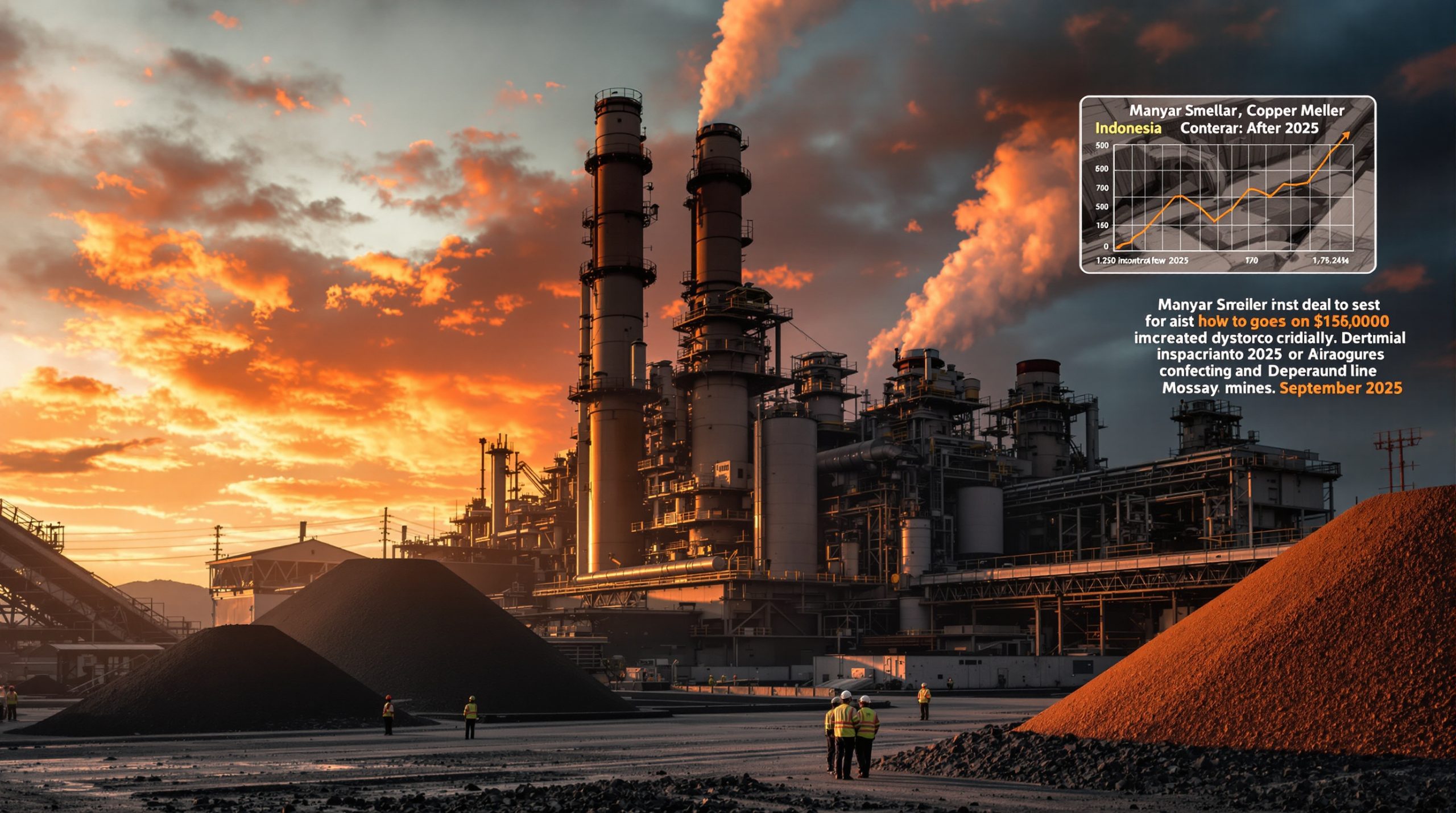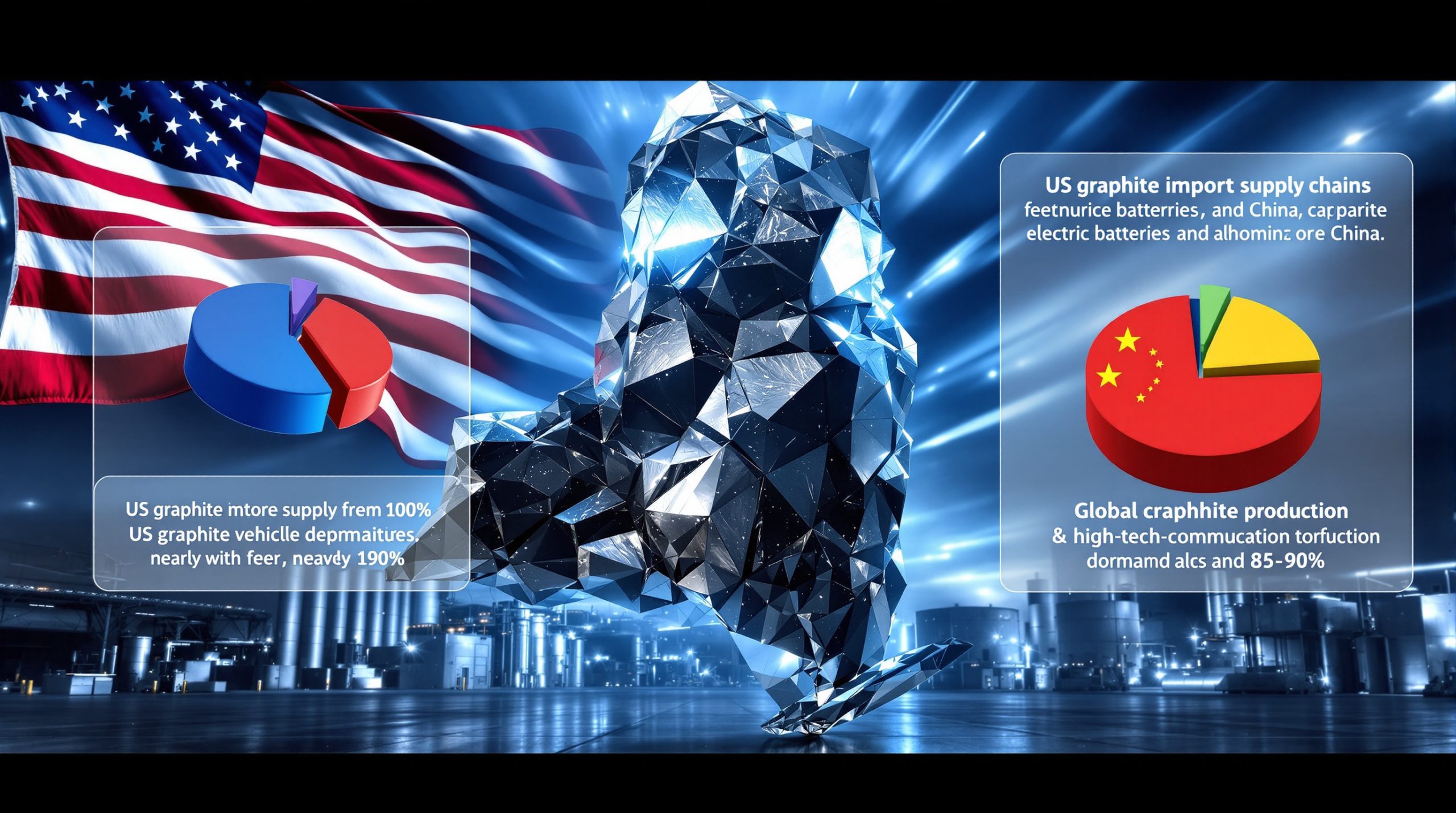Understanding China's Rare Earth Strategy: Supply Control and Global Impact
China has recently issued stark warnings to Western companies against stockpiling rare earth elements, threatening that such actions could trigger even greater supply shortages. This strategic move underscores Beijing's determination to maintain tight control over these critical minerals energy transition that power everything from smartphones to missile guidance systems.
"Beijing tightly controls supply of the metals that are vital for electric vehicles and other defense and civilian sectors," according to recent reports from international financial media. These warnings emerge amid escalating tensions between China and Western nations over technology security and resource access.
The Strategic Context Behind China's Warnings
China's warnings arrive at a critical juncture in global technology competition. With rare earths being essential components in high-tech manufacturing, China's dominant position gives it significant leverage in international trade negotiations and technological competition.
The timing is particularly significant as Western nations accelerate plans to reduce dependence on Chinese supplies. This has created a situation where Chinese authorities appear to be sending a clear message about their continued market power despite diversification efforts.
The Critical Importance of Rare Earth Elements
Rare earth elements comprise 17 metals with unique properties that make them indispensable in modern technology. Despite their name, most are relatively abundant in the Earth's crust, but concentrated, economically viable deposits are scarce.
Applications in Modern Technology
These elements power countless technologies we rely on daily:
- Neodymium and praseodymium: Create powerful permanent magnets used in EV motors, wind turbines, and hard disk drives
- Dysprosium and terbium: Enable magnets to maintain performance at high temperatures in defense systems
- Europium and yttrium: Provide red and blue colors in screens and energy-efficient lighting
- Lanthanum and cerium: Used in catalytic converters and petroleum refining
Their unique magnetic, luminescent, and electrochemical properties make them virtually irreplaceable in many applications despite ongoing research into alternatives.
Strategic Importance in Defense and Clean Energy
The defense sector depends heavily on rare earths for precision-guided munitions, radar systems, and electronic warfare equipment. A single F-35 fighter jet contains approximately 417 kg of rare earth materials.
For the green energy transition, these elements are equally critical:
- Wind turbines (particularly offshore models) require up to 600 kg of rare earth elements per megawatt
- Electric vehicles use 1-2 kg of rare earth magnets in their motors
- Energy-efficient lighting technologies rely on phosphors made from europium, terbium, and yttrium
This dual importance in both civilian and military technologies elevates rare earths from mere industrial commodities to materials of national security significance.
China's Dominance in the Rare Earth Market
Historical Development of China's Market Control
China's current market dominance resulted from decades of strategic planning and investment:
| Period | Development | Impact |
|---|---|---|
| 1980s | China begins heavy investment in mining and processing | Established early foothold in emerging market |
| 1990s-2000s | Western mines close due to price competition | Consolidated global market share to >90% |
| 2010 | China restricts exports during dispute with Japan | Demonstrated willingness to use supply as leverage |
| 2011-2015 | WTO ruling against export quotas | China shifts to production quotas and consolidation |
| 2016-2020 | Industry reorganization into state-controlled entities | Strengthened government oversight of supply chain |
| 2021-Present | New export control laws implemented | Created legal framework for restricting strategic materials |
This carefully orchestrated strategy transformed rare earths from obscure elements to powerful geopolitical tools.
Current Supply Chain Control Mechanisms
China maintains its grip through several sophisticated mechanisms:
- Production quotas: Limiting mining to control global supply and prices
- Processing dominance: Controlling approximately 85% of global processing capacity
- Environmental regulations: Selectively enforcing standards to manage output
- Export restrictions: Implementing licensing requirements for foreign sales
- Vertical integration: Encouraging domestic use in high-value manufacturing
- Technical expertise: Maintaining knowledge advantages in processing technologies
These mechanisms work together to create a system where China can influence the entire global supply chain from mine to manufactured product.
Western Efforts to Reduce Dependence
Diversification Projects and New Mining Operations
Western nations are pursuing multiple strategies to create alternative supply chains:
-
United States: The Mountain Pass mine in California has resumed operations under MP Materials, though it still sends materials to China for processing. The Pentagon is funding processing facilities to create a complete domestic supply chain.
-
Australia: Lynas Rare Earths operates the Mount Weld mine and has established processing capabilities in Malaysia, with plans for additional facilities in the U.S. and Australia.
-
Canada: Several projects under development, including the Strange Lake deposit in Quebec and the Nechalacho project in Northwest Territories, which began production in 2021.
-
European Union: The European Raw Materials Alliance aims to secure supplies through international partnerships, recycling initiatives, and potential mining operations in Greenland and Sweden.
These efforts face significant challenges, including higher environmental standards, financing difficulties, and the need to rebuild technical expertise lost over decades.
Recycling and Substitution Research
Alongside mining diversification, substantial research is underway to:
- Develop efficient battery recycling process for recovering rare earths from electronic waste
- Create alternative materials that can replace rare earths in certain applications
- Improve material efficiency to reduce the quantities needed
- Explore "urban mining" of landfills and industrial waste
The U.S. Department of Energy's Critical Materials Institute and similar research centers in Europe and Japan are leading these efforts, though commercial-scale solutions remain years away from widespread implementation.
Corporate Responses to China's Warnings
Strategic Options for Western Manufacturers
Western companies face complex choices in response to China's warnings:
- Comply with Chinese expectations: Avoid stockpiling but remain vulnerable to supply disruptions
- Diversify supply chains: Invest in non-Chinese sources despite higher costs
- Pursue vertical integration: Secure ownership stakes in mining and processing operations
- Develop technological alternatives: Research products requiring fewer or no rare earth elements
- Form government partnerships: Collaborate on strategic minerals reserve and supply security
Most major manufacturers are pursuing a combination of these strategies while carefully avoiding public statements that might antagonize Chinese suppliers.
Risk Management Approaches
Companies are implementing sophisticated risk management strategies:
- Establishing long-term supply contracts with multiple suppliers across different regions
- Investing in recycling technologies to recover materials from manufacturing waste and end-of-life products
- Maintaining strategic inventories while avoiding the appearance of "stockpiling"
- Redesigning products to use more readily available materials where possible
- Creating industry consortiums to share risks and resources for supply chain development
Tesla, for example, has redesigned some motors to reduce rare earth content, while also securing supply agreements with non-Chinese producers. Defense contractors like Raytheon and Lockheed Martin are working closely with the Pentagon on securing critical material supplies.
Market Implications of China's Supply Control
Price Volatility and Supply Uncertainty
China's warnings signal potential market disruptions:
- Increased price volatility as buyers adjust procurement strategies
- Risk premiums added to rare earth prices from non-Chinese sources
- Acceleration of investment in alternative supply chains
- Potential short-term supply disruptions if US‑China trade tensions escalate
Prices for key rare earth oxides have already shown significant volatility, with neodymium oxide prices fluctuating between $50-200 per kilogram over recent years based on export policies and demand shifts.
Impact on Green Technology Transition
The rare earth supply situation has significant implications for climate goals:
- Potential delays in scaling up EV production and renewable energy deployment
- Higher costs for clean technologies if rare earth prices increase substantially
- Accelerated research into alternative motor designs and materials
- Complicated international climate cooperation due to resource competition
Industry analysts suggest that rare earth supply constraints could add $1,000-2,000 to the production cost of electric vehicles if alternative designs aren't developed, potentially slowing adoption rates.
Global Trade and Geopolitical Implications
Trade Disputes and Restrictions
China's control of rare earths has already sparked international tensions:
- The U.S., EU, and Japan filed a successful WTO complaint against China's export quotas in 2012
- Rare earths have been featured prominently in US critical minerals policy negotiations
- Export control laws in both China and Western nations increasingly target critical minerals
- Strategic minerals are becoming bargaining chips in broader geopolitical negotiations
These tensions are likely to intensify as demand increases with the energy transition and defense modernization programs.
Emerging Geopolitical Alignments
The rare earth situation is reshaping international relationships:
- "Friendshoring" initiatives prioritize supply chains among political allies
- Resource-rich nations are gaining diplomatic leverage through critical mineral deposits
- New strategic partnerships are forming around mineral access and processing technology
- International development funding is increasingly tied to mineral access agreements
Countries like Australia, Canada, and Brazil are using their mineral resources to strengthen strategic relationships, while African nations with significant deposits are finding themselves courted by both Chinese and Western interests.
Future Outlook for Rare Earth Supply Chains
Short-Term Market Projections
Over the next 2-3 years, we can expect:
- Continued price volatility for key rare earth elements
- Gradual diversification of supply chains, though China will remain dominant
- Increased government intervention through strategic stockpiles and financing
- Selective production increases from Chinese suppliers to maintain market control
Companies will need to navigate carefully between securing supplies and avoiding actions that could trigger Chinese rare earth export restrictions or trade barriers.
Long-Term Industry Transformation
Looking ahead 5-10 years, the rare earth industry will likely undergo significant changes:
- More geographically diverse supply chains with processing capacity outside China
- Higher environmental and social standards throughout the industry
- Increased recycling and circular economy approaches providing 15-20% of supply
- Development of substitute materials for some, but not all, applications
- New international frameworks for critical mineral cooperation
While China will remain a major player, its market share is likely to decline gradually as alternatives develop and technological substitution advances.
Preparing for Rare Earth Supply Challenges
Recommendations for Manufacturers
Companies dependent on rare earths should consider:
- Conducting detailed supply chain risk assessments identifying specific vulnerabilities
- Developing contingency plans for potential supply disruptions
- Investing in research for material efficiency and substitution
- Engaging with governments on critical mineral strategies
- Exploring joint ventures with mining companies in friendly jurisdictions
Early movers in supply chain diversification may gain significant competitive advantages as global rare earth supply chains become increasingly strategic.
Policy Recommendations
Governments concerned about rare earth access should prioritize:
- Establishing or expanding strategic stockpiles of critical materials
- Supporting domestic mining and processing through financial incentives and regulatory clarity
- Negotiating international agreements on critical mineral access with like-minded countries
- Funding research for recycling, substitution, and more environmentally friendly processing
- Developing regulatory frameworks that balance environmental protection with supply security
These initiatives require sustained commitment across multiple election cycles and close public-private coordination.
FAQ About Rare Earth Elements and Supply Chains
What makes rare earth elements different from other critical minerals?
Rare earth elements possess unique magnetic, luminescent, and electrochemical properties that make them difficult to substitute in many high-tech applications. Unlike some other critical minerals, they often work together in specific combinations to achieve desired performance characteristics. Additionally, the processing of rare earths is technically challenging and environmentally intensive, creating high barriers to entry for new suppliers.
Are rare earth elements actually rare in the Earth's crust?
Despite their name, most rare earth elements are relatively abundant in the Earth's crust—some are more common than copper or lead. The term "rare" refers more to their dispersed distribution, which makes concentrated deposits uncommon and economically viable mines rare. The challenge isn't finding rare earths but extracting and processing them economically and with minimal environmental impact.
Why hasn't recycling solved the rare earth supply problem?
Recycling rare earths faces several challenges: they're used in small quantities in complex products, making separation difficult; current product designs don't facilitate easy recovery; and the economics often don't support recycling operations without government support. However, as prices rise and technology improves, recycling is becoming more viable and could provide a significant secondary supply source in the future.
How quickly can Western nations develop alternative supply chains?
Developing complete rare earth supply chains outside China requires significant time and investment. Mining operations typically take 7-10 years from discovery to production, while building processing facilities takes 3-5 years. Rebuilding the technical expertise lost when Western operations closed decades ago presents another challenge. Most analysts believe it will take at least a decade to create robust alternative supply chains, even with accelerated government support.
Ready to Stay Ahead of China's Rare Earth Strategy?
Discover real-time alerts on significant ASX mineral discoveries, including rare earth elements, powered by Discovery Alert's proprietary Discovery IQ model. Explore how major mineral discoveries can lead to substantial market returns by visiting the Discovery Alert discoveries page and position yourself ahead of the market with actionable investment insights.




